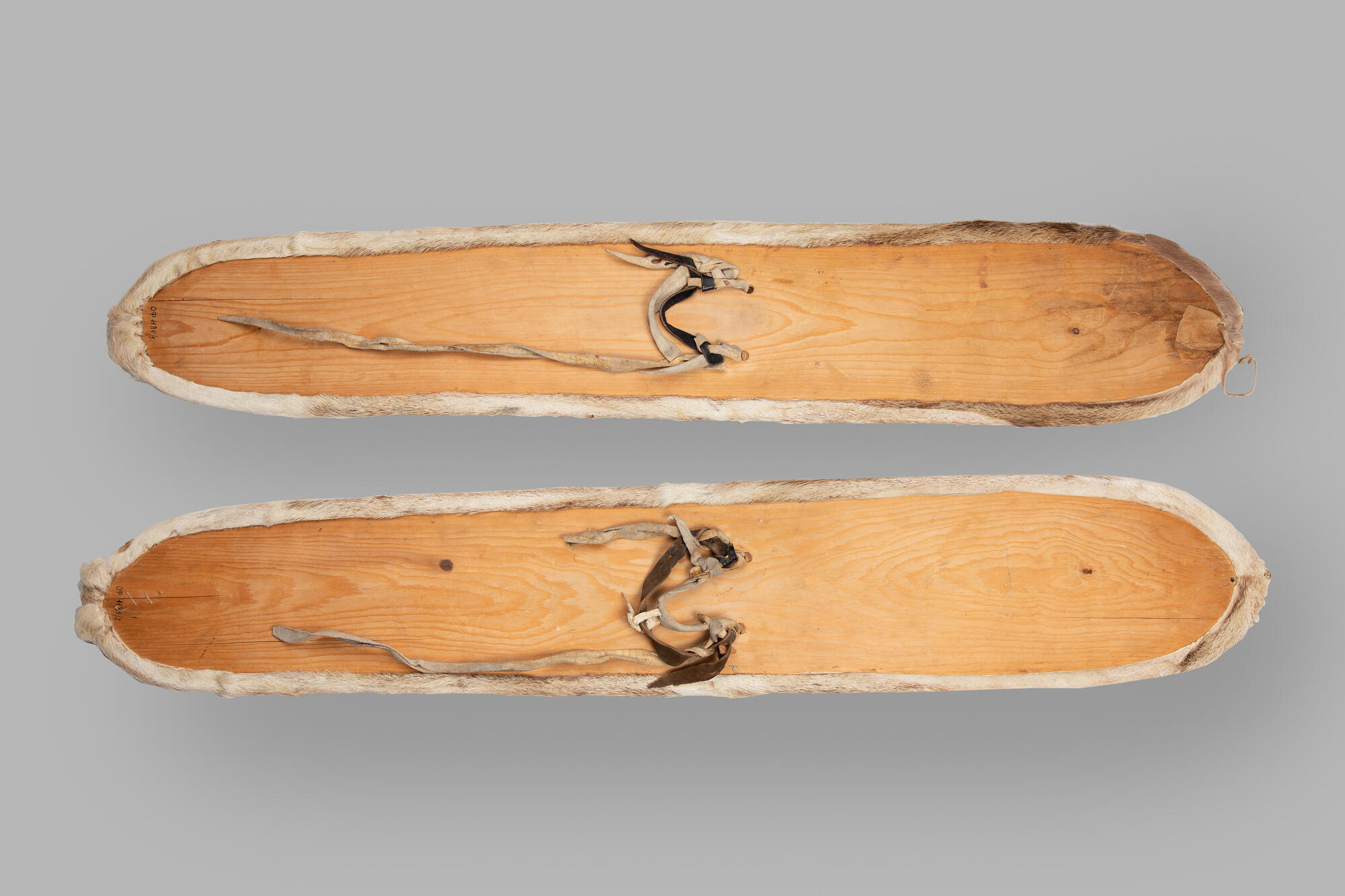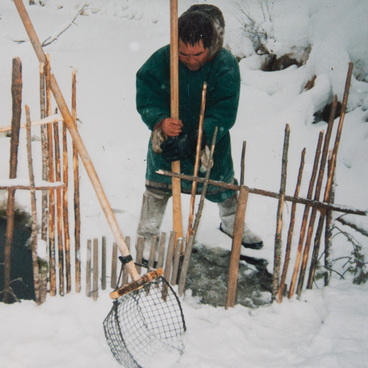Skis are the main means of transportation for hunters in Western Siberia in the winter season. They are made from a spruce log or aspen, and a piece of hide from the lower leg of an elk or deer is attached to the bottom of the skis. This type of deer skin has a very dense and stiff pile. The pile is put in such a way as to facilitate sliding and improve grip. Thanks to this ski-making technique, a person can easily overcome hills without slowing down.
Skins are attached to the skis with perch scale glue. To dry the skis, artisans drive two thin poles into the ground and put a board with skis on a rope. Finished skis are secured to the feet with a double strap that wraps around the toe and heel. Sometimes a snow bag is nailed to the skis, in which they put the foot and tighten it with ropes under the knee. Snow does not accumulate under the foot, does not interfere with movement and does not creak, but there is a drawback: if the hunter falls through the ice, it is almost impossible to remove skis with a snow bag. For their safety, the skier must untie the snow bag before crossing a frozen body of water.
The Nenets go skiing without poles. Modern Nenets use factory-made skis, but adapt them to suit their needs. In total, there are three main types of Nenets skis: “pyai lamba” — narrow wooden skis that are used in summer or on ice; “pena lamba” — skis made of wood, lined with reindeer hair, the edges of which go to the top of the skis; and “hoba lamba” — skis lined from below with deer skin.
Hunters rarely use other people’s skis, they must match the weight and height of the owner. Skiing is especially common in the forest-tundra regions — during hunting, when grazing and driving deer. Going around the traps, the Nenets carry skis on sleds and put them on in challenging places: hills, bushes, and deep snow. A skier can carry loaded sleds for tens of kilometers, sometimes this is the only way to transport goods in the Far North.
Skis, as an indispensable attribute of the northern peoples, have magical properties for them. For example, in order to approach his future bride, a young man must strike one ski three times against the other — for good luck.
Skins are attached to the skis with perch scale glue. To dry the skis, artisans drive two thin poles into the ground and put a board with skis on a rope. Finished skis are secured to the feet with a double strap that wraps around the toe and heel. Sometimes a snow bag is nailed to the skis, in which they put the foot and tighten it with ropes under the knee. Snow does not accumulate under the foot, does not interfere with movement and does not creak, but there is a drawback: if the hunter falls through the ice, it is almost impossible to remove skis with a snow bag. For their safety, the skier must untie the snow bag before crossing a frozen body of water.
The Nenets go skiing without poles. Modern Nenets use factory-made skis, but adapt them to suit their needs. In total, there are three main types of Nenets skis: “pyai lamba” — narrow wooden skis that are used in summer or on ice; “pena lamba” — skis made of wood, lined with reindeer hair, the edges of which go to the top of the skis; and “hoba lamba” — skis lined from below with deer skin.
Hunters rarely use other people’s skis, they must match the weight and height of the owner. Skiing is especially common in the forest-tundra regions — during hunting, when grazing and driving deer. Going around the traps, the Nenets carry skis on sleds and put them on in challenging places: hills, bushes, and deep snow. A skier can carry loaded sleds for tens of kilometers, sometimes this is the only way to transport goods in the Far North.
Skis, as an indispensable attribute of the northern peoples, have magical properties for them. For example, in order to approach his future bride, a young man must strike one ski three times against the other — for good luck.



